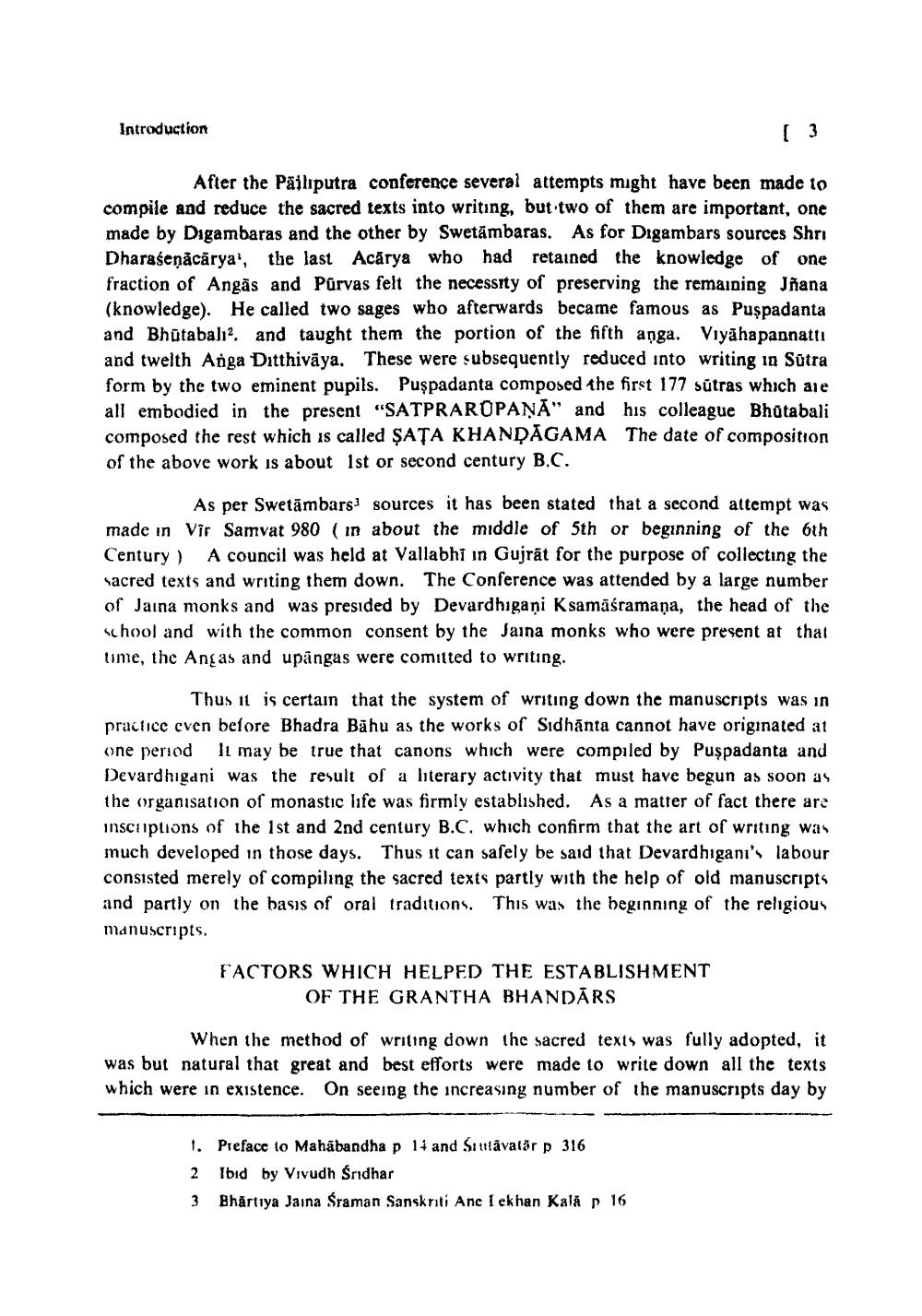________________
Introduction
[
3
After the Päiliputra conference several attempts might have been made to compile and reduce the sacred texts into writing, but two of them are important, one made by Digambaras and the other by Swetāmbaras. As for Digambars sources Shri Dharaśeņācārya', the last Acārya who had retained the knowledge of one fraction of Angãs and Purvas felt the necessity of preserving the remaining Jñana (knowledge). He called two sages who afterwards became famous as Puşpadanta and Bhutabalı2 and taught them the portion of the fifth anga. Viyahapannattı and twelth Anga Ditthivāya. These were subsequently reduced into writing in Sutra form by the two eminent pupils. Puşpadanta composed the first 177 sutras which are all embodied in the present "SATPRAROPAŅĀ" and his colleague Bhotabali composed the rest which is called ŞAȚA KHANDAGAMA The date of composition of the above work is about 1st or second century B.C.
As per Swetāmbars sources it has been stated that a second attempt was made in Vir Samvat 980 (in about the middle of 5th or beginning of the 6th Century) A council was held at Vallabhi in Gujrat for the purpose of collecting the Sacred texts and writing them down. The Conference was attended by a large number of Jaina monks and was presided by Devardhigaņi Ksamāśramaņa, the head of the school and with the common consent by the Jaina monks who were present at that time, the Angas and upāngas were comitted to writing.
Thus it is certain that the system of writing down the manuscripts was in practice cven before Bhadra Bāhu as the works of Sidhānta cannot have originated at one period It may be true that canons which were compiled by Puşpadanta and Devardhigani was the result of a literary activity that must have begun as soon as the organisation of monastic life was firmly established. As a matter of fact there are inscriptions of the 1st and 2nd century B.C. which confirm that the art of writing was much developed in those days. Thus it can safely be said that Devardhigani's labour consisted merely of compiling the sacred texts partly with the help of old manuscripts and partly on the basis of oral traditions. This was the beginning of the religious manuscripts.
FACTORS WHICH HELPED THE ESTABLISHMENT
OF THE GRANTHA BHANDĀRS
When the method of writing down the sacred texts was fully adopted, it was but natural that great and best efforts were made to write down all the texts which were in existence. On seeing the increasing number of the manuscripts day by
1. Preface to Mahābandha p 11 and Stuavatör p 316 2 Ibid by Vivudh Sridhar 3 Bhärtiya Jaina Śraman Sanskriti Ane I ekhan Kală p 16




